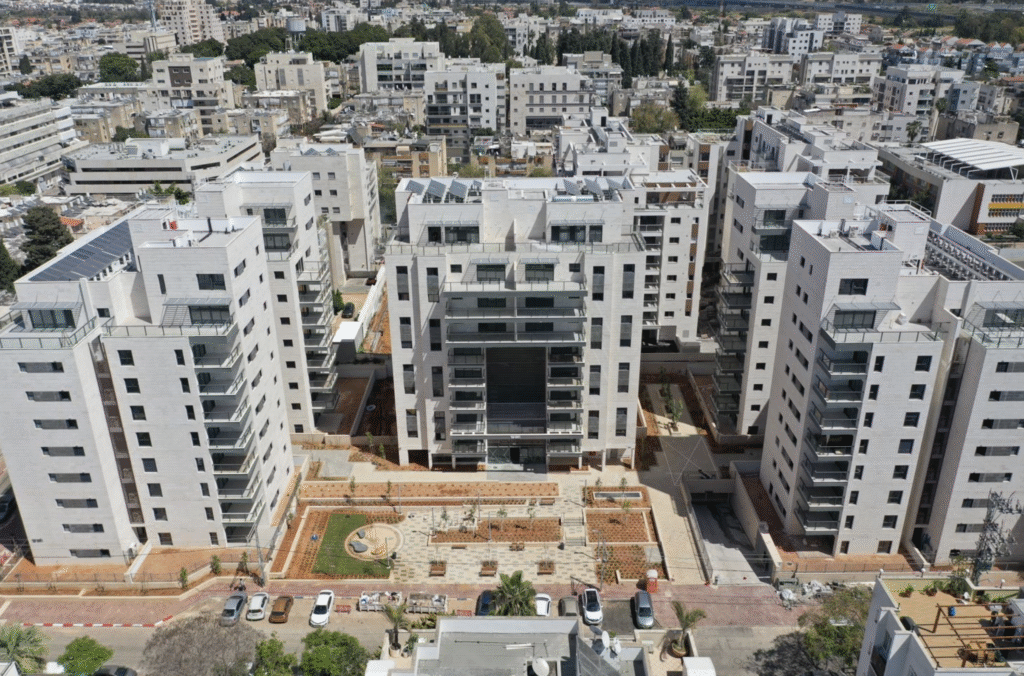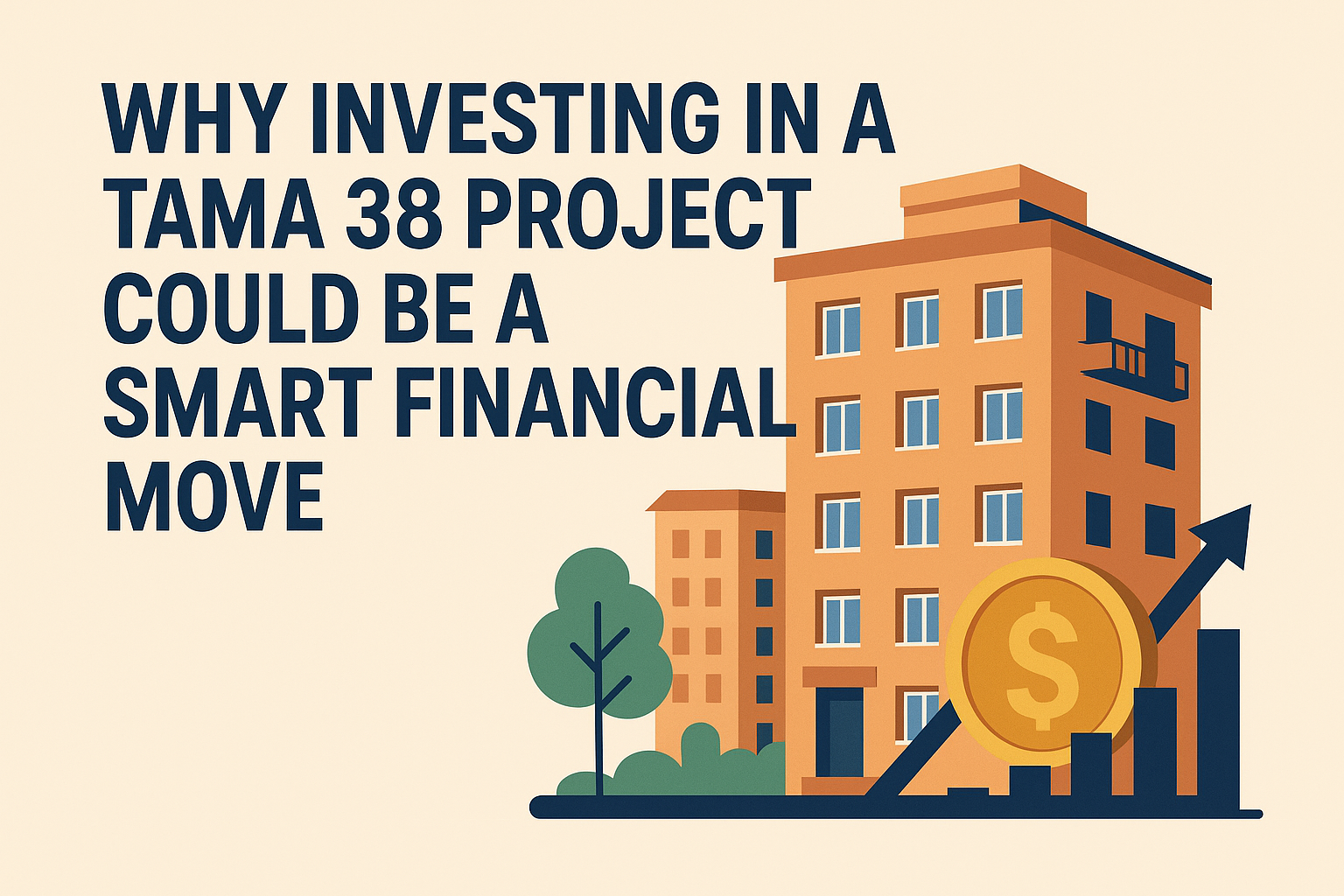Pinui-Binui, which translates from Hebrew as “Evacuation-Construction,” represents one of Israel’s most ambitious and far-reaching urban renewal programs. The concept emerged as a formal government initiative in the late 1990s, though similar approaches had been employed earlier on a smaller scale. At its core, the program addresses multiple pressing challenges facing Israel’s housing market: the deterioration of aging housing stock, earthquake safety concerns, acute land scarcity, and the need for increased urban density.
The historical context that necessitated Pinui-Binui is deeply rooted in Israel’s development patterns. During the 1950s through 1970s, Israel experienced waves of mass immigration that required rapid housing solutions. This period saw the hasty construction of thousands of apartment buildings, many built with limited resources, minimal amenities, and according to construction standards that would be considered inadequate today. By the 1990s, these buildings—typically 3-4 story concrete structures without elevators, proper insulation, or adequate parking—were showing significant signs of aging. Additionally, many were built before modern seismic codes were implemented, creating substantial safety risks in earthquake-prone regions of the country.
The legal framework underpinning Pinui-Binui has evolved considerably over the decades. The foundation was established in the Evacuation and Construction Law of 1965, but the program gained significant momentum through amendments in 2006 that clarified procedures and provided economic incentives. Perhaps the most consequential legal development came with the 2018 amendment that reduced the required consent threshold from 80% to 66% of residents in buildings with four or more units. This change has accelerated implementation by addressing the persistent challenge of holdout residents who could previously block projects despite overwhelming majority support.
The Pinui-Binui process typically begins with site identification, where developers or municipal authorities evaluate neighborhoods based on building age, structural condition, and redevelopment potential. Following a preliminary feasibility study, developers initiate contact with residents, often through building representatives. The most challenging phase frequently involves securing resident consensus—a process that can take years of negotiation and relationship building. Residents typically organize committees and engage specialized legal representation to negotiate terms with developers. These negotiations cover everything from the size increase of new apartments (typically 12-25 square meters larger than original units) to specifications, temporary housing arrangements during construction, and special accommodations for elderly or disabled residents.
The economic model that makes Pinui-Binui viable relies on a delicate balance of interests. For developers, success depends on the “multiplication factor”—the ratio of new units they can build compared to the original number. Most projects require at least a 1:3 ratio to be economically feasible, meaning for every original apartment, three new units must be constructed. This multiplication creates sufficient profit margin to cover the substantial costs: providing new apartments to original residents, financing temporary housing during the 2-3 year construction period, demolition expenses, construction costs, marketing, and the carrying costs of financing throughout a project that might span 5-8 years from inception to completion.
For original residents, Pinui-Binui offers remarkable benefits without direct financial investment. They receive brand-new, larger apartments in modern buildings with elevators, parking, storage, enhanced security features, and significantly improved earthquake resistance and energy efficiency. The value increase is substantial, typically 30-70% above their original property value, with tax exemptions on this appreciation under the Tax Law of 2002. However, residents must consider increased property taxes due to larger units and higher valuations, potentially higher maintenance fees in modern buildings, and the significant inconvenience of temporary relocation during construction.
Municipalities also have strong incentives to support these projects. Pinui-Binui transforms aging neighborhoods without direct public expenditure, increases property tax revenue through both more units and higher values, and often incorporates improved public spaces and infrastructure. However, cities must carefully manage the increased density to ensure that school capacity, transportation infrastructure, and public services can accommodate the population growth. This balancing act represents one of the program’s most significant implementation challenges.
The technical transformation achieved through Pinui-Binui is dramatic. Original 3-4 story buildings without elevators are typically replaced with modern towers of 15-30 stories. These new structures incorporate underground parking, modern security systems, energy-efficient design, full accessibility compliance, and earthquake resistance standards. The architectural approach often attempts to create a new neighborhood identity while preserving some connection to the area’s history and character.
Regional variations in Pinui-Binui implementation are significant across Israel. The Tel Aviv metropolitan area shows the highest economic viability, with multiplication factors of 1:4 or higher common and projects often including luxury elements and premium specifications. Jerusalem projects face greater complexity due to historical preservation considerations and diverse community needs, requiring careful navigation of religious and cultural sensitivities. Haifa’s topographical challenges affect project design, with terraced solutions common and somewhat lower multiplication factors due to market conditions. In peripheral cities, economic viability becomes more challenging, often requiring additional government incentives or subsidies.
The Israeli government has progressively enhanced Pinui-Binui through supportive measures. The establishment of the Urban Renewal Authority in 2016 aimed to coordinate and streamline the process. Financial guarantees and tax incentives—including reduced purchase tax for developers, capital gains exemptions for original residents, and VAT benefits—have improved economic feasibility. Expedited approval tracks through specialized planning committees have addressed some bureaucratic bottlenecks, while legal frameworks have been strengthened to protect resident rights throughout the process.
Contemporary challenges facing Pinui-Binui include rising construction costs that have squeezed economic models, infrastructure gaps as municipalities struggle to upgrade services proportionate to increased density, concerns about preserving social fabric through dramatic physical transformation, gentrification effects that can make renewed neighborhoods unaffordable for future generations, and persistent approval bottlenecks despite streamlining efforts. In response, the sector has begun adopting innovations including modular construction techniques, digital platforms for resident engagement, advanced sustainability features, mixed-income approaches, and design strategies aimed at maintaining community connections.
The future of Pinui-Binui appears to be evolving toward more comprehensive approaches. Rather than focusing on individual buildings, there’s growing emphasis on whole-neighborhood renewal plans. Integration with transit development, particularly around light rail and metro stations, is increasingly prioritized. The legal and procedural aspects are becoming more standardized to accelerate implementation, while tenant protection measures are being enhanced, especially for vulnerable populations. More complex public-private partnerships are emerging, with municipal authorities taking active roles rather than serving merely as regulators.
For Israel’s housing market, Pinui-Binui represents much more than a real estate development approach—it has become a crucial strategy for national housing renewal without consuming scarce open land. The program demonstrates the potential for market-based solutions to address complex urban challenges when supported by appropriate regulatory frameworks and incentives. As Israel continues to face housing shortages and affordability challenges, the Pinui-Binui model offers valuable lessons in balancing multiple stakeholder interests while achieving meaningful urban transformation. The thousands of apartments currently in various stages of the Pinui-Binui process throughout the country stand as testament to the program’s central role in shaping Israel’s urban future.

